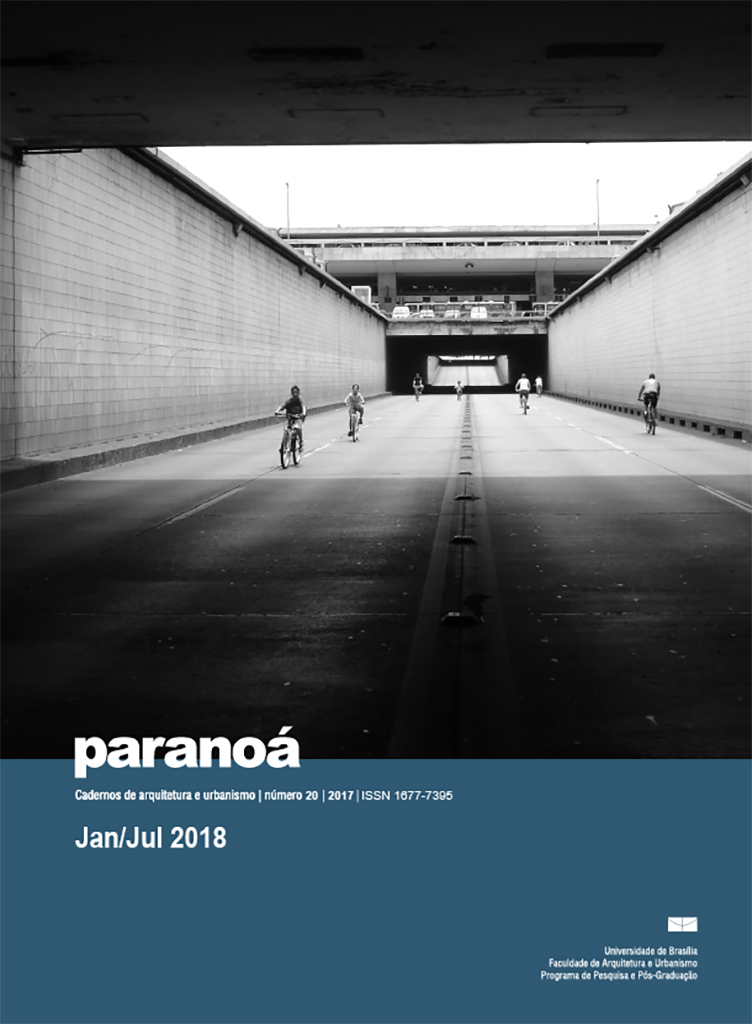Estudo do Uso de Resíduo da Fresagem de Pavimentos Flexíveis em Concretos Estruturais
DOI:
https://doi.org/10.18830/issn.1679-0944.n20.2018.02Keywords:
Residue of the milling of flexible floors, Aggregate, Concrete, Sustainability, Architecture TechnologyAbstract
The large aggregates occupy 48% to 53% of the total volume of the concrete, being an extraction and aggregation of the large owner responsible for consuming nonrenewable natural resources. This work had a natural aggregation advantage by the recycled aggregate coming from the milling of flexible concrete pavements and known as RAP (Reclaimed Asphalt Pavement). The evaluation was made from tests of resistance to anesthesia under study, in addition to physical compliance, from absorption by capillary suppression and by immersion. For the study, a concrete trait was fixed, with a resistance of 25 MPa, and used as 0, 20% and 30% replacement images. As it behaves, there is no improvement in the performance of the concrete made with RAP in relation to the reference concrete. In relation to a capillarity limitation in relation to the reference traffic. The absorption by immersion in concretes with the substitutions is an increase in the absorption rates with the reference trace. However, despite the fall in strength, a mixture with structural characteristics was achieved according to NBR 6118/2014.
Downloads
References
AL-MUFTI, R.L.; FRIED, A.N. Improving the strength properties of recycled asphalt aggregate concrete, Construction and Building Materials, v.149, p.45”“52, 2017.
ASSOCIAÇÃO BRASILEIRA DE NORMAS TÉCNICAS ”“ NBR 5738: 2003. Concreto: procedimento para moldagem e cura de corpos-de-prova. Rio de Janeiro, 2003.
ASSOCIAÇÃO BRASILEIRA DE NORMAS TÉCNICAS ”“ NBR 5739: 2007. Concreto: ensaios de compressão de corpos-de-prova cilíndricos. Rio de Janeiro, 2007.
ASSOCIAÇÃO BRASILEIRA DE NORMAS TÉCNICAS ”“ NBR 6118: 2014. Projeto de estruturas de concreto - Procedimento. Rio de Janeiro, 2014.
ASSOCIAÇÃO BRASILEIRA DE NORMAS TÉCNICAS ”“ NBR 9778: 2009. Argamassa e concreto endurecidos - Determinação da absorção de água, índice de vazios e massa específica. Rio de Janeiro, 2009.
ASSOCIAÇÃO BRASILEIRA DE NORMAS TÉCNICAS ”“ NBR 9779: 2013. Argamassa e concreto endurecidos - Determinação da absorção de água por capilaridade. Rio de Janeiro, 2013.
ASSOCIAÇÃO BRASILEIRA DE NORMAS TÉCNICAS ”“ NBR NM45: 2006. Agregados: determinação da massa unitária e do volume de vazios. Rio de Janeiro, 2006.
ATOYEBI, O.D.; SADIQ, O.M. Experimental data on flexural strength of reinforced concrete elements with waste glass particles as partial replacement for fine aggregate, Data in Brief, v.18, p.846-859, 2018.
BEZERRA, I. M. T. Cinza da casca do arroz utilizada em argamassas de assentamento e revestimento. 2010. Dissertação de mestrado - Universidade Federal de Campina Grande, Campina Grande, 2010.
BOUSSETTA, I.; KHAY, S.E.E.; NEJI; J., Experimental testing and modelling of roller compacted concrete incorporating RAP waste as aggregates. European Journal of Environmental and Civil Engineering, 2018.
CONFEDERAÇÃO NACIONAL DO TRANSPORTE - CNT. Anuário CNT do transporte: Estatística consolidada. 2017. Disponível em: Acesso em: 20 dezembro de 2017.
ERDEM, S., BLANKSON, M.A., Environmental performance and mechanical analysis of concrete containing recycled asphalt pavement (RAP) and waste precast concrete as aggregate, Journal of Hazardous Materials, v.264, p.403”“ 410, 2014.
ESTEVES, M. R. Estudo do potencial energético e aproveitamento das cascas de coco verde para a produção de briquete em Maceió-AL. 2014. Dissertação de mestrado - Universidade Federal de Alagoas, Maceió, 2014.
KAREIN, S.M.M.; RAMEZANIANPOUR, A.A.; EBADI, T.; ISAPOUR, S.; KARAKOUZIAN M., A new approach for application of silica fume in concrete: Wet granulation, Construction and Building Materials, v.157, p.573-58, 2017.
MENEZES, R. R.; NEVES, G. A. e FERREIRA, H. C. O estado da arte sobre o uso de resíduos como matérias-primas cerâmicas alternativas. Revista Brasileira de Engenharia Agrícola e Ambiental, Campina Grande, v.6, n.2, p.303-313,2002.
NEVILLE, A. M. Propriedades do Concreto. Porto Alegre: Bookman Editora, 2015.
O’ REILLY, V.D. Método de dosagem de concreto de elevado desempenho. Pini, São Paulo,1992.
SACHET, T.; BALBO, J.T.; F.T. BONSEMBIANTE. Interpretação da perda de resistência em concretos secos com incorporação de fresados asfálticos com apoio de análise microscópica. Revista IBRACON de Estruturas e Materiais, v.6, n.6, p. 933-954, 2013.
SILVA, R. B.; ANGULO, S. C.; PILEGGI, R. G.; SILVA, C. O. Concretos secos produzidos com agregados reciclados de RCD separados por densidade. Ambiente Construído, Porto Alegre, V.15, n. 4, p. 335-349, 2015.
Downloads
Published
How to Cite
Issue
Section
License
Autores que publicam nesta revista concordam com os seguintes termos:
- Autores mantém os direitos autorais e concedem à revista o direito de primeira publicação, com o trabalho simultaneamente licenciado sob a Licença Creative Commons Attribution que permite o compartilhamento do trabalho com reconhecimento da autoria e publicação inicial nesta revista. http://creativecommons.org/licenses/by/4.0
- Autores têm autorização para assumir contratos adicionais separadamente, para distribuição não-exclusiva da versão do trabalho publicada nesta revista (ex.: publicar em repositório institucional ou como capítulo de livro), com reconhecimento de autoria e publicação inicial nesta revista.
- Autores têm permissão e são estimulados a publicar e distribuir seu trabalho online (ex.: em repositórios institucionais ou na sua página pessoal) a qualquer ponto antes ou durante o processo editorial, já que isso pode gerar alterações produtivas, bem como aumentar o impacto e a citação do trabalho publicado (Veja O Efeito do Acesso Livre).















